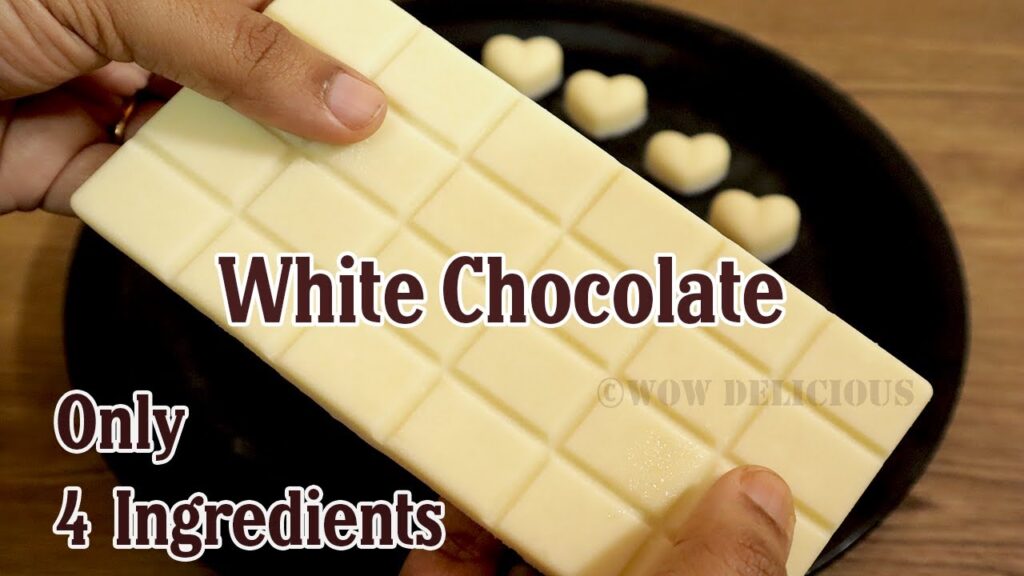What is White Chocolate? An In-Depth Exploration
White chocolate has become a popular confectionery item enjoyed by many around the world. Despite its name, white chocolate is unique compared to traditional chocolate varieties, such as dark and milk chocolate. This article will explore the origins, ingredients, production process, uses, health aspects, and cultural significance of white chocolate. Additionally, we will provide information on where to find white chocolate products and answer frequently asked questions.
Overview of White Chocolate
White chocolate is a sweet, creamy confection made primarily from cocoa butter, sugar, and milk solids. Unlike dark and milk chocolates, which contain cocoa solids (the non-fat component of cocoa beans), white chocolate does not have any cocoa solids, which is why it lacks the characteristic chocolate flavor and color. Instead, it has a rich, buttery taste that is often complemented by vanilla.
Historical Background
The history of white chocolate dates back to the early 20th century. Although cocoa beans have been used for centuries to produce chocolate, white chocolate emerged as a distinct product in the 1930s.
- Origins: The first commercial white chocolate was created in Switzerland by the Nestlé company. It was initially developed as a way to utilize excess cocoa butter, which is a byproduct of chocolate production.
- Popularization: White chocolate gained popularity in the United States during the 1940s and 1950s, primarily as a confectionery item. Its sweet, creamy flavor made it a favorite among consumers, leading to its incorporation into various desserts and snacks.
Ingredients in White Chocolate
The primary ingredients in white chocolate include:
- Cocoa Butter: This is the fat extracted from cocoa beans and is the main ingredient in white chocolate. It gives white chocolate its smooth texture and rich mouthfeel.
- Sugar: Sugar is added to sweeten the chocolate and balance the flavors. The amount of sugar can vary depending on the brand and recipe.
- Milk Solids: These are derived from milk and contribute to the creamy texture and flavor of white chocolate. Milk powder or condensed milk is commonly used.
- Vanilla: Natural or artificial vanilla flavoring is often added to enhance the taste of white chocolate.
- Emulsifiers: Ingredients such as lecithin may be included to improve the texture and stability of the chocolate.
Production Process
The production of white chocolate involves several key steps:
- Cocoa Butter Extraction: Cocoa beans are processed to extract cocoa butter. This involves roasting the beans, grinding them into a paste, and separating the fat from the solids.
- Mixing Ingredients: The extracted cocoa butter is combined with sugar, milk solids, and any additional flavorings, such as vanilla. This mixture is blended until smooth.
- Conching: The mixture is then refined through a process called conching, where it is continuously mixed and aerated to achieve a smooth texture and develop flavor.
- Tempering: The chocolate is tempered by carefully heating and cooling it to stabilize the cocoa butter crystals. This process gives the chocolate a glossy finish and a satisfying snap when broken.
- Molding and Cooling: The tempered white chocolate is poured into molds and cooled until it solidifies. Once set, it can be removed from the molds and packaged for sale.
Uses of White Chocolate
White chocolate is a versatile ingredient used in a variety of culinary applications:
- Confectionery: White chocolate is often used to make candies, truffles, and other sweet treats. Its creamy texture and sweet flavor make it a popular choice for confections.
- Baking: White chocolate chips are commonly added to cookies, brownies, and cakes. They can also be melted and used as a drizzle or coating for desserts.
- Desserts: White chocolate is a key ingredient in many desserts, including mousses, cheesecakes, and panna cotta. It can also be used to create ganaches and fillings for pastries.
- Drinks: White chocolate can be melted and mixed into hot beverages, such as lattes and hot chocolate, to add sweetness and creaminess.
- Decorative Elements: White chocolate is often used for decorative purposes in desserts. It can be molded into shapes, piped onto cakes, or grated for garnish.
Health Aspects of White Chocolate
While white chocolate is enjoyed by many, it is important to consider its nutritional profile:
- Caloric Content: White chocolate is high in calories due to its sugar and fat content. A typical serving can contain around 150-200 calories or more.
- Sugar Content: The sugar content in white chocolate can be significant, which may contribute to health concerns such as obesity and dental issues if consumed in excess.
- Lack of Antioxidants: Unlike dark chocolate, which is rich in antioxidants and flavonoids, white chocolate lacks these beneficial compounds due to the absence of cocoa solids.
- Moderation: As with any treat, moderation is key. Enjoying white chocolate as an occasional indulgence is generally acceptable within a balanced diet.
Cultural Significance
White chocolate has carved out a niche in various cultures and culinary traditions:
- Gourmet Treats: In many regions, white chocolate is considered a gourmet treat and is often used in high-end desserts and confections.
- Holiday Treats: White chocolate is popular during holidays and festive occasions. It is often used in seasonal recipes, such as white chocolate peppermint bark during the winter holidays.
- Fusion Cuisine: Chefs and bakers often experiment with white chocolate in fusion cuisine, combining it with flavors from different culinary traditions to create unique dishes.
Where to Find White Chocolate
White chocolate can be found in various forms and products:
- Grocery Stores: Most grocery stores carry white chocolate chips, bars, and baking ingredients in the baking aisle.
- Specialty Stores: Gourmet food shops and specialty chocolate stores often offer high-quality white chocolate products, including artisanal bars and confections.
- Online Retailers: Many online retailers offer a wide selection of white chocolate products, including bulk options for baking and cooking.
- Homemade Recipes: White chocolate can also be made at home using cocoa butter, sugar, and milk solids, allowing for customization of flavors and sweetness.
FAQ
- Is white chocolate real chocolate?
While it is called “chocolate,” white chocolate does not contain cocoa solids, which are essential for traditional chocolate classification. Therefore, it is technically not considered true chocolate. - What does white chocolate taste like?
White chocolate has a sweet, creamy flavor with buttery notes. It lacks the bitterness and depth of flavor found in dark chocolate. - Can white chocolate be used in baking?
Yes, white chocolate is commonly used in baking, particularly in cookies, cakes, and desserts. It can be melted, chopped, or used in chips. - Is white chocolate healthier than dark chocolate?
White chocolate is generally higher in sugar and fat and lacks the health benefits associated with dark chocolate, such as antioxidants. Moderation is key. - How should white chocolate be stored?
White chocolate should be stored in a cool, dry place, away from direct sunlight. It can be kept in an airtight container to prevent it from absorbing moisture or odors.
| Aspect | Description | Wikipedia Link |
|---|---|---|
| Definition | A sweet confection made primarily from cocoa butter, sugar, and milk solids | https://en.wikipedia.org/wiki/White_chocolate |
| Ingredients | Cocoa butter, sugar, milk solids, vanilla, emulsifiers | |
| Uses | Baking, confectionery, desserts, drinks, decorative elements | |
| Health Aspects | High in calories and sugar, lacks antioxidants | |
| Cultural Significance | Popular in gourmet treats and holiday recipes |
Conclusion
White chocolate is a unique and versatile confection that has earned its place in the world of sweets and desserts. While it may not be “true” chocolate in the traditional sense, its creamy texture and sweet flavor make it a favorite among many. Understanding its ingredients, uses, and cultural significance can enhance your appreciation for this delightful treat. Whether enjoyed on its own or incorporated into various recipes, white chocolate continues to be a beloved indulgence for chocolate lovers everywhere.



